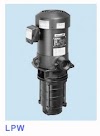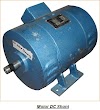Engine Component and Term - The most difficult aspect of comprehending the reciprocating piston engine's design is being able to identify and name the numerous components that tata rias the power unit. To that aim, the following section briefly outlines the major components as well as their names.
This is a cast structure having cylindrical holes drilled to guide and support the pistons, as well as to capture the working gases. It also comes with a jacket that holds a liquid coolant.
Cylinder Head
This casting encloses the combustion end of the cylinder block and contains both the intake and exhaust poppet-valves, as well as their ports for admitting and exhausting the combustion products.
Crankcase
The crankshaft and bearings are supported and housed in this cast robust frame. The cylinder block is commonly cast as a mono-construction.
This is a pressed-steel or cast-aluminiumalloy container that encloses the bottom of the crankcase and serves as a lubricant reservoir.
Piston
This is a pressure-tight cylindrical plunger that is subjected to gas pressure expansion. Its job is to transform combustion gas pressure into a concentrated driving thrust along the connecting rod. As a result, it must also serve as a guide for the connecting rod's small end.
Piston Rings
These are circular rings that seal the gaps between the piston and the cylinder, with the goal of preventing gas from escaping and controlling the quantity of lubricant allowed to reach the cylinder's top.
Gudgeon-pin
This pin delivers the piston's thrust to the small end of the connecting rod while allowing the rod to rock back and forth as the crankshaft rotates.
Connecting-rod
This serves as a strut as well as a tie link rod. It delivers the piston's linear pressure impulses to the big-end journal of the crankshaft, where they are translated into turning effort.
Crankshaft
A basic crankshaft is made up of two perpendicular crank-arms and an offset big-end journal made out of a circular-sectioned shaft that has been bent or cranked. The major journals are provided by the unbent section of the shaft. The connecting rod connects the crankshaft to the piston, allowing the piston's straightline rotation to be converted into a rotary motion at the crankshaft about the main-journal axis.
Crankshaft Journals
These are high-quality cylindrical pins that have been machined parallel on the crankshaft's center and offset axes. These journals are installed in plain bush-type bearings in the crankcase (main journals) and one end of the connecting rod when assembled (the big-end journal).
Small-end
The gudgeon-pin creates a hinged junction between the piston and the connecting rod, allowing the connecting rod to oscillate relative to the cylinder axis as it goes in and out of the cylinder.
Big-end
This is the junction between the connecting rod and the big-end journal of the crankshaft that allows for relative angular movement between the two components as the engine turns.
Main-end
The rubbing pairs created between the crankshaft main journals and their corresponding plain bearings in the crankcase are referred to as this.
Line of Stroke
The line of stroke is the central path that the piston is required to follow due to cylinder restrictions.
Inner and Outer Dead Centres
The piston will be in one of two extreme positions when the crankarm and connecting rod are aligned along the stroke line. The crank and piston are considered to be at inner dead centre (IDC) or top dead centre (TDC) when the piston is closest to the cylinder head (TDC). The crank and piston are considered to be at outer dead centre (ODC) or bottom dead centre (BDC) when the piston is furthest from the cylinder head (BDC). For valve-to-crankshaft timing, as well as ignition and injection settings, these reference points are critical.
Clearance Volume
The clearance volume, also known as the combustion-chamber space, is the gap between the cylinder head and the piston crown at TDC.
Crank-throw
The crank-throw is the distance between the center of the main journal of the crankshaft and the center of the big-end journal. The leverage that the gas pressure operating on the piston can apply in spinning the crankshaft is determined by this radial length.
Piston Stroke
The piston stroke is the movement of the piston from IDC to ODC, which corresponds to the crankshaft rotating half a revolution or 180 degrees. It's also the same as the crank-throw multiplied by two.
As a result, a long or short stroke will allow you to apply a high or little turning effort to the crankshaft.
Ctlinder Bore
Initially, the cylinder block is cast with sand cores in the cylinder gaps. The rough holes are machined with a single-point cutting tool mounted radially at the end of a revolving kafe after the sand cores have been removed. Boring the cylinder to size is the process of removing the undesired metal from the hole. As a result, the akibat cylindrical hole is referred to as a cylinder bore, and its internal diameter is simply referred to as the bore or bore size.
Sumber http://keluargasepuh86.blogspot.com









